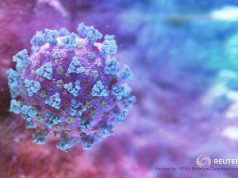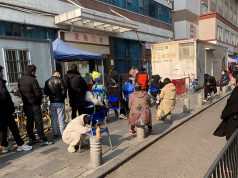Presidential spokesperson Harry Roque based his comparison of the novel coronavirus situation between the Philippines and New Zealand on population instead of the differences in government response.
New Zealand announced early this week that their country is now COVID-19-free after having zero active cases for at least 17 days since the first known case was confirmed last February.
New Zealand Prime Minister Jacinda Ardern finally lifted all containment measures imposed on the country’s nearly five million residents and the economy reopened.
Prior to this, it recorded a total of 1,504 cases and 22 deaths.
“While the job is not done, there is no denying this is a milestone … Thank you, New Zealand,” Ardern told reporters.
When asked for comment about such achievement, Roque said in an interview with state-run PTV-4 last June 10 that the Philippines cannot replicate the same achievement as New Zealand because of the differences in population.
“Tatapatin ko po kayo. Medyo mahirap makamit ‘yan ng Pilipinas. Kasi kung ikukumpara mo sa New Zealand, ang land area niyan ay kasinglaki lang ng Luzon, ang population niyan ay 5 million lang,” Roque said.
“Eh tayo sa Metro Manila lang, 14 million na tayo so talagang dikit dikit na tayo, dahilan kung bakit mabilis kumalat ang sakit. So I’m happy for the New Zealanders, pero limited population po sila at malaking land area, kaya siguro ganun,” he added.
Some Filipinos criticized Roque for citing the population as the reason for the country’s struggles in containing the spread of the COVID-19.
Dr. Jai Cabajar, a resident at the Philippine General Hospital and Internal Medicine, pointed this out on Twitter.
“We all know the population isn’t the only reason,” Twitter user Cabajar said.
Another user argued that contrary to the Duterte administration, New Zealand’s government studies the needs of its constituents.
“One thing that New Zealand has, and the Philippines does not is a government that carefully studies its country and its constituents. Not what Harry Roque is claiming,” the user said.
Another user, meanwhile, made a quick fact-check on Roque’s claim that Luzon and New Zealand have the same land area.
“Its (New Zealand) land area is only as large as Luzon and its population is only five million," – Harry Roquehttps://t.co/y1LPQAyMva pic.twitter.com/xoKJBLDSsV
— 𝚢𝚊𝚗𝚜𝚑𝚞𝚊 #JunkTerrorBill (@ryan_joshua_) June 10, 2020
Quick comparisons between New Zealand and the Philippines
The Philippines
Compared to the small Oceania country, as of June 11, the Philippines has a total of 24,000 positive cases, wherein 253 are “fresh” and 190 are “late.” Meanwhile, the deadly virus killed a total of 1,027 Filipinos.
Local researchers from the University of the Philippines have warned the national government over prematurely lifting of restrictions or lifting them too soon in areas that still have the highest numbers of COVID-19 cases, including Metro Manila.
One Facebook user even noticed that their previous prediction that the number of cases will reach 24,000 by June 15 already happened on June 11, days prior to the expected date.
BUT DID UP SCIENTISTS STUTTER???Read more: https://news.mb.com.ph/2020/05/09/up-study-shows-lifting-of-ecq-on-may-15-may-result-in-24000-covid-19-cases-by-june-15/
Posted by Mark Joseph Euste on Wednesday, June 10, 2020
Aside from the high transmission rate, there are also discrepancies among the data of the National Task Force against COVID-19, data presented by Roque to the public, data from the Department of Health and other third-party trackers.
Local scientists have also revealed other issues in the country’s health care system such as lack of supplies and medical personnel which hinder them from flattening the curve.
New Zealand
National Geographic reported that New Zealand started to ban flights from China early on February 3 and imposed strict lockdown measures last March despite only having a few cases back then.
The lockdown protocols New Zealand imposed during that time were considered to be among the “strictest” or “harshest” in the world.
Categorized as level 4 restrictions, grocery stores, pharmacies, hospitals and petrol stations are the only industries or businesses allowed. Social interaction, meanwhile, was restricted within households.
While the residents are in quarantine, the government implemented the “isolate, test, treat and trace” protocols the World Health Organization required to suppress and control the new pathogen.
Time Magazine that aside from this strategy, New Zealand’s relatively remote location greatly contributed to its success.
“It is 2,500 miles east of Australia and its nearest neighbor is the tiny island chain of New Caledonia, 1,200 miles to the north, the article read.
Moreover, low population density also played an important role given that transmissions happen via close contact.
“Only 1.66 million people live in Auckland, New Zealand’s biggest city, and its population density is less than one-twentieth of America’s biggest urban center, New York City,” Time Magazine said.










